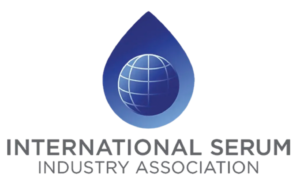
The Dish’s Weekly Biotechnology News Wrap Up – October 7th, 2022
This week’s headlines include: US to begin screening travelers coming from Uganda for Ebola, Half in new survey plan to get flu shot this season, FDA offers details on PDUFA VII STAR review pilot, Boehringer and Surrozen Seek Retinal Therapies Along the Wnt Pathway, and After prior rejection, BioMarin tries again with hemophilia gene therapy in the US.
Podcasts:
Check out our podcast channel. We have over 50 great podcasts covering drug discovery, stem cell culture, upstream and downstream biomanufacturing and more! Click below to download from iTunes or Google play:
![]()
![]()
In Case You Missed It, Recent Articles on Cell Culture Dish and Downstream Column:
![]()
Solving the Solubility Challenge of Wnt Proteins with Gibco’s Wnt Surrogate-Fc Fusion Recombinant Protein
Wnt signaling is one of the key cascades regulating development and stemness during embryogenesis and is known to play a role in oncogenesis. Since their discovery, three Wnt signaling pathways have been characterized and all are activated by the binding of a Wnt-protein ligand to receptors belonging to the Frizzled (FZD) family and co-receptors such as lipoprotein receptor-related protein (LRP)-5/6. Wnt proteins are critical for numerous in vitro research applications ranging from stem cell differentiation strategies to the maintenance of epithelial stem cell–derived organoid models…
Cell and Gene Therapy Manufacturing and Commercialization US 2022 – Impressions of this year’s event
Informa Connect just concluded its Cell & Gene Therapy Manufacturing and Commercialization US event (CGT 2022). As part of Biotech Week Boston, a hybrid in-person and virtual event, it supported probably the most comprehensive biotech/biopharm event of the year…
A Multi-capillary Electrophoresis System Speeding Development Timelines for Biotherapeutics — Run Multiple Samples in Parallel with the BioPhase 8800 system
Today, we are analyzing more drug candidates with a wider range of modalities, all with the understanding that speed to market is more critical than ever before. As a result, scientists working on these candidates are looking for ways to increase throughput while maintaining robustness and reproducibility. While automated capillary electrophoresis (CE) instruments provide quicker separation times and high reproducibility, these systems operate using a single capillary format that offers limited throughput…
The Importance of Monoclonality in Cell Line Development: The Solentim VIPS Advantage
Single-cell cloning (SCC) is a critical step in monoclonal cell line development (CLD), which is widely used across the biopharmaceutical industry for production of recombinant proteins antibodies, vaccines, and for the development of stem cell and chimeric antigen receptor (CAR) T cell therapies…
Scalable AAV Production Platform from Bench to Commercial Manufacturing
Gene therapies treat disease at a molecular level by transmitting genetic information to a target cell to correct a genetic defect, to inhibit the expression defective gene, to restore normal function or to impart a new function to the cell to treat or prevent disease. The clinical successes of genetic medicines have driven increased investment to implement these therapies for broader indications beyond rare diseases. Adeno-associated virus (AAV) is the vector of choice of many in vivo gene therapies and as more therapies reach the clinic, technological challenges must still be overcome to fully unlock its potential…
New online Gene Therapy Academy offers great resources to support scaling up from lab to production scale
In this podcast, we spoke with Emanuel Krobath, Biopurification Specialist and Chiara Pacini, Bioprocess Specialist both with Pall Corporation about gene therapy process development including challenges and resources that are available for support…
VEGA VEGAPOINT 21®– a non-contact probe for point level control in hygienic bubble traps
Gas bubbles in process fluids and buffer solutions are a common yet significant problem in bioprocessing because they can alter the microfluidic environment and negatively impact downstream chromatography steps. They can impede the flow through the resin column and limit contact with the resin in the resin bed, which can decrease separation efficiency and resolution. A hygienic bubble trap is a device that effectively separates gas bubbles from process fluids by allowing the bubbles to rise to the top of the fluid (Figure 1). Effective separation of gas bubbles relies on accurate monitoring and control of the fluid level in the bubble trap—this is where level sensors come in. The working volume of a bubble trap is typically 60-80% of its total volume, and the fluid should have a residence time of approximately 15 seconds. If the level is too low, the gas bubbles don’t have sufficient residence time to be effectively removed from the process fluid and the bubbles may pass with the process fluid through the bubble trap outlet. Conversely, if the level of the fluid is too high, fluid and bubbles can be drawn into the gas vent line and cause problems with contamination…
Fit for Purpose AAV Purification – Realizing the Perfect Scale for Cell and Gene Therapies
The explosive advancements within the cell and gene therapy sector have the driven the demand for high-quality GMP-compliant viral vector manufacturing. Adeno-associated virus (AAV) has been the primary vector driving this growth, as well as to a lesser extend lentivirus (LV) and adenovirus (AV). The use of these vectors is expected to grow fast also in the future and to diversify to include other therapies, such as oncolytic viruses…
A Guide for Navigating the Single Use Technology Supply Chain
In this podcast we spoke with Derrick Alig, North American Western Regional Sales Manager for PSG Dover Biotech, Chris Couper, President and Founder of Liquidyne Process Technologies, and Phil Sanders Biotech Chief Innovation Officer at Agilitech about current supply chain challenges, possible solutions, what the future holds, and ways to navigate supply chain shortages to ensure manufacturers meet their timelines…
Important Processing Steps and Considerations in Oligonucleotide Manufacturing
The oligonucleotide industry is experiencing a surge of interest and momentum thanks to the discovery of the CRISPR-Cas9 system and the development of RNA-based vaccines and therapies. Oligonucleotides represent one of the most promising therapeutic modalities for the foreseeable future as evidenced by over 300 candidates in clinical trials. Industry insiders predict that roughly 10% of new drug approvals by the FDA will be oligonucleotide-based, which emphasizes the need to address some key challenges with how oligonucleotide manufacturing can be effectively and reproducibly scaled topping the list…
Training Video:
Headlines:
“US to begin screening travelers coming from Uganda for Ebola,” The Associated Press
The United States will begin screening travelers coming from Uganda for Ebola as an additional precaution aimed at trying to prevent an outbreak in the African country from spreading, the Biden administration said Thursday. There have been no Ebola cases from the outbreak reported outside Uganda, and the risk in the U.S. is considered low. U.S. officials described the screening move as an additional precaution…
“Half in new survey plan to get flu shot this season,” The Hill
Half of U.S. adults plan to get the flu shot this year as scientists warn of a potentially severe upcoming flu season, according to a survey released Wednesday. The survey from the National Foundation for Infectious Diseases found 49 percent of respondents said they plan to get a flu shot during the 2022-23 flu season, although almost 7 in 10 said they recognized that a flu vaccine is the best measure to take against flu-related hospitalization and death…
“FDA offers details on PDUFA VII STAR review pilot,” Regulatory Focus
The US Food and Drug Administration (FDA) has announced details on its Split Real Time Application Review (STAR) pilot, a program designed to shorten the review time of existing drugs and biologics where there is an unmet medical need so patients can access the therapies earlier…
“Boehringer and Surrozen Seek Retinal Therapies Along the Wnt Pathway,” BioSpace
Surrozen Inc announced Thursday it has partneredwith Boehringer Ingelheim to research and develop a therapeutic for the treatment of retinal diseases. The partnership, valued at nearly $600 million, centers on Surrozen’s developmental compound SZN-413, a bi-specific antibody targeting Fzd4-mediated and LRP5 Wnt signaling…
“After prior rejection, BioMarin tries again with hemophilia gene therapy in the US,” FiercePharma
With a recent European nod and multiple years of durability data in the books, BioMarin Pharmaceutical is finally getting a second shot at approval for its gene therapy valoctocogene roxaparvovec in the U.S. Late this week, the company said it had resubmitted its FDA application for the drug, also known as Valrox, to treat adults with severe hemophilia A. The FDA is expected to accept or reject BioMarin’s resubmission by the “end of October,” the company added.
